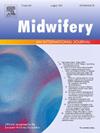了解产妇对新生儿黄疸的看法:来自乌拉圭一家医院的见解。
IF 2.5
3区 医学
Q1 NURSING
引用次数: 0
摘要
背景:新生儿黄疸(NJ)是影响全世界新生儿的一种常见疾病。尽管发病率很高,但母亲对其病因、严重程度和治疗方法的误解仍然存在,影响了对该病的认识和管理。在乌拉圭,以前没有研究评估过产妇对NJ的认识和看法。目的:本研究旨在评估产妇对NJ的认识,确定影响认知的社会人口、产科和妇科因素,并评估信息来源。方法:在乌拉圭佩雷拉罗塞尔医院中心进行了一项描述性横断面研究。采用结构化访谈和自填问卷对201名产后母亲进行了调查。收集了社会人口学因素、NJ暴露史、一般知识和母亲对NJ认知和管理的态度的数据。结果:虽然大多数参与者都听说过NJ,但只有31%的人认为他们知道它是什么。以知识为基础的问题的总体准确率为25%,“我不知道”的回答频率很高。医疗预约是信息的主要来源,但仍存在相当大的知识差距。值得注意的是,98%的母亲表示,如果她们的新生儿表现出NJ的迹象,她们会寻求医疗救助,但对严重程度和治疗方法的误解仍然存在。结论:本研究突出了乌拉圭产妇对NJ知识和意识的实质性不足。尽管获得医疗保健的机会很高,但所有社会人口群体的指导都明显不足。加强围产期教育和实施有针对性的认识举措是提高NJ的早期认识和管理至关重要。本文章由计算机程序翻译,如有差异,请以英文原文为准。
Understanding the maternal perception of neonatal jaundice: Insights from a hospital in Uruguay
Background
Neonatal jaundice (NJ) is a common condition affecting new-borns worldwide. Despite its high prevalence, misconceptions about its causes, severity, and treatment persist among mothers, influencing the recognition and management. In Uruguay, no studies have previously assessed maternal knowledge and perceptions of NJ.
Objective
This study aimed to evaluate maternal understanding of NJ, identify sociodemographic, obstetric and gynecological factors influencing perception, and assess sources of information.
Methods
A descriptive, cross-sectional study was conducted at the Pereira Rossell Hospital Centre in Uruguay. A total of 201 postpartum mothers were surveyed using structured interviews and self-administered questionnaires. Data were collected on sociodemographic factors, prior exposure to NJ, general knowledge, and maternal attitudes towards its recognition and management.
Results
While most participants had heard about NJ, only 31 % believed they knew what it was. The overall accuracy rate for knowledge-based questions was 25 %, with a high frequency of "I don't know" responses. Medical appointments were the primary source of information, yet considerable knowledge gaps remained. Notably, 98 % of mothers stated they would seek medical attention if their new-born exhibited signs of NJ, but misconceptions regarding severity and treatment remained.
Conclusion
This study highlights substantial deficiencies in maternal knowledge and awareness of NJ in Uruguay. Despite high healthcare access, inadequate guidance was evident across all sociodemographic groups. Enhancing perinatal education and implementing targeted awareness initiatives are crucial for improving the early recognition and management of NJ.
求助全文
通过发布文献求助,成功后即可免费获取论文全文。
去求助
来源期刊

Midwifery
医学-护理
CiteScore
4.50
自引率
7.40%
发文量
221
审稿时长
13.4 weeks
期刊介绍:
Midwifery publishes the latest peer reviewed international research to inform the safety, quality, outcomes and experiences of pregnancy, birth and maternity care for childbearing women, their babies and families. The journal’s publications support midwives and maternity care providers to explore and develop their knowledge, skills and attitudes informed by best available evidence.
Midwifery provides an international, interdisciplinary forum for the publication, dissemination and discussion of advances in evidence, controversies and current research, and promotes continuing education through publication of systematic and other scholarly reviews and updates. Midwifery articles cover the cultural, clinical, psycho-social, sociological, epidemiological, education, managerial, workforce, organizational and technological areas of practice in preconception, maternal and infant care.
The journal welcomes the highest quality scholarly research that employs rigorous methodology. Midwifery is a leading international journal in midwifery and maternal health with a current impact factor of 1.861 (© Thomson Reuters Journal Citation Reports 2016) and employs a double-blind peer review process.
 求助内容:
求助内容: 应助结果提醒方式:
应助结果提醒方式:


